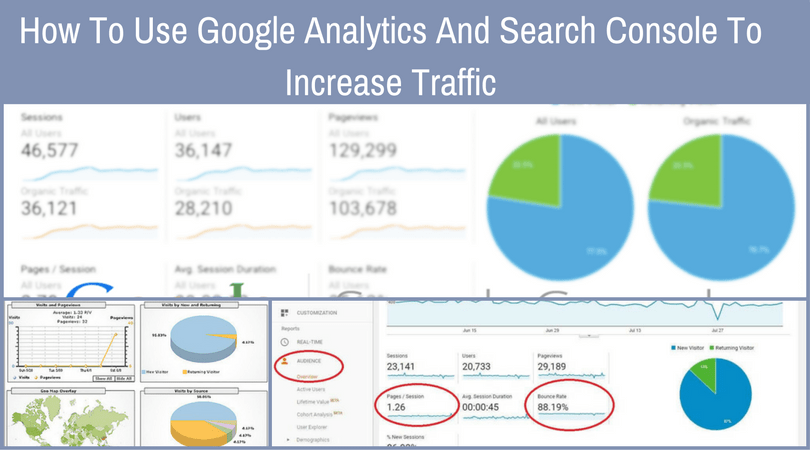
SEO can be a bit complicated. If you’ve dived into it, you will know that there are so many moving parts. The biggest questions we ask ourselves are, is it really effective? Will the optimizations really increase my traffic? We only have so much time in a day. How do we get the most out of our work and maximize our results? Using you current analytics of course!
Site optimization with software such as Google Analytics and Google Search console has a lot to offer to a site owner or creator such as yourself. The possibilities in improving your site using just these two software are limitless. But for this article, we are going to focus on the top ways to increase the traffic to your site. For this, we will need a working site and Google Analytics up and running before anything happens.
Firstly, link it with Google Search Console after Google Analytics has been set up. Just follow this link to get instructions on enabling it on Google Analytics. Google Analytics and Google Search Console are similar but with key differences such as being able to repair errors, respond to security threats and finding keywords that will greatly help you increase web traffic to your site. We need both as they complement each other in the data they supply to us.
One thing to note, when looking through your data, don’t be alarmed if you see some of your data marked as ‘(other)’ or i.com, that is Google’s way of letting you know there’s not enough data, your categories are too wide or very simply they are just withholding data. And I also recommend getting a few months’ worth of data before acting on it to make the best possible decision.
Customize content to the demographics
The first step, determine the demographic that is visiting your site. Information of your visitors, such as location, language spoken, average and gender are available in Google Analytics. This information is useful in determining what content you should make in the future to increase the session times and the number of pages visited per session. Use this data to find out who your site’s majority demographic are and focus on creating content for them. The content has to be topical and relevant to them and is in a language they understand. You have to research this yourself, even better if you fit the demographics since you’ll have a rough idea of what the demographics likes to look at.
For Example:
For example, using the data of a sample site, the majority of our sample sites visitors are Malaysian at 50% with a minority from other countries, so we should prioritize with the creation of content that is targeted at Malaysians but not neglecting the visitors of other countries. The point is to focus more on the content for the majority country since they form the bulk of our traffic.
Same goes for gender and age. Be aware of what’s trending for the demographic and act appropriately, push what you think they want based on what’s trending. Just remember, don’t ignore them lest you lose them in the long run. Also, try and look at both sets of data together to obtain the best view of your demographics. The data is within the Audience Tab within the Demographics sub-tab.
So using the same example, the large majority of visitors of our sample sites visitors, at around 91%, uses English in their browsers when they visit the site. And while I did say that the minority should not be ignored, apply some discretion, ascertain whether the effort is worth it if only benefits a handful of visitor. And in this case, you should since they would represent close to 1000 visitors and that number might rise if you include that translate button or translated content.
Distributing Link Juice from stronger pages
The next method in driving traffic to your site is to harvest the link juice of the web. First off, what is Link Juice? Link Juice is value and authority, passed between pages, and helps make your site more credible to search engines. Most sites pass Link Juice around their sites by linking their better performing content with underperforming ones and visitors will then linked to other articles and ultimately transfer Link Juice around the site and dropping Bounce rates as a whole.
Of course, this helps under-performing content and helps increase exposure of your site rather than concentrating the Link Juice in one or two performing post. For example, say your site has content or page with a high number of visits and long duration times, this indicates it’s relevance as there’s high traffic and visitors do read the content. On the other hand, there are many pages or content with much lower traffic and poor session duration, maybe if viewed on Google Analytics, would rank at #10-20 on the Site Content within the Behaviour tab so we have to balance it out.
How does it work?
You can distribute Link Juice by placing links into the performing pages content. The links would link to under-performing content and in time visitors will click on those links. Subsequently, Link Juice will flow to these non-performing pages and boost its performance. Try to continue linking within the non-performing pages together to guide visitors from one page to another and over time the Link Juice would be flowing all across your site. The effectiveness of your actions is found within the Bounce Rate and session duration of visitors of your site, if the bounce rate is still high, then you still have a lot left to do. FYI, Bounce Rate is the percentage of single-page sessions where there’s no interaction with the page beyond it. You can find the data in the Overview subtab of the Audience tab.
Optimize for Keywords that are already ranking
Next up, keywords are massively important when it comes to generating traffic to your site. How can people find your site if the words they look for is not associated with your site? Therefore, it is vital that people can find your site when they look for it. Look for the Search Traffic tab and the Search Queries sub-tab and what is provided is the search queries that have sent visitor traffic to your site. The information here is valuable as you can see how keywords rank and even the number of impressions on a keyword it has. This helps determine which keywords searched by the visitors are showing them your site.
You can build up your site based on what keyword is established and associated with your site. You do this by optimizing future content in line with the keywords that are most popular. Using click-per-keyword data and number of impression per keyword data together and we can determine impressions created by individual pages and the click-through rate (CTR) of each page. Then determine which page’s title or meta description are not attractive enough to compel visitors to click or visit the page. Compare the CTR and impressions created, if impressions are high but CTR is low, it means your title and meta description is not enticing enough for people to click in and see what you have to offer.
How it works and how to do it?
A rule of thumb, include keywords relevant to the main title and the meta description of the page. This way when visitors search for keywords, Google places your page at the top of the search results page as there are many matching keywords within your title and description. The search engines will think your site will have the answer visitors are looking for. Try this for yourself, search for something, and when looking through the search results you can see the keywords that you typed in are bolded within the title and the description. This indicates that the results are there because a lot of the keywords you put into the search engine line up with the keywords of the site title and meta description.
Example:
Say you did exactly that but you realize although you are trending, it is not the ranking that you wanted. For example, if you optimized a page for keywords ‘guide to Google Analytics’ but it’s ranking for keywords ‘how to use Google Analytics’ within the Query sub-tab, then it’s not optimized for either. One solution is to fit keywords such as ‘how to use Google Analytics’ into the title, meta descriptions, even sub-heading of your page.
This presents a wider spectrum of ranking potentials since there are more ranking keywords within the title and meta description. This would be able to reach a wider audience, increasing both the number of Impressions created alongside with the Click-through rate (CTR). You can find which keywords or combinations of them brought visitors to click your site by going to the Acquisition Tab within the Search Console sub-tab and going through Queries.
Using the sample site data, the second ranked search query result has almost 200 visitors clicking on the site with the impressions at 500+. Click through rate (CTR) is also quite good at 17% and the average position of the page is at 5.7. The average position is the average ranking of the page for other queries. The higher the average position, the better optimized the keywords are. The data for most clicks and impressions are withheld by Google, for unknown reasons. So, the next step is altering the heading and description to increase the position of the page. This widens the relevance to the search engine and in turn, help boost the CTR of the page further.
Optimize pages for UX on both Mobile and Desktops
The next step is to very simply make your site more user-friendly. Why? Because it is estimated that we spend most of our time on the net using our phones and tablets to access it. So obviously, your site needs to be user-friendly for mobile users. Using sample sites data, most visitors accessed the site using mobile devices such as smartphones and tablet with a minority using desktops, confirming that most visitors access the web through a handheld. This information is found within the Audience tab and within that the Mobile sub-tab.
Recommended but not compulsory:
One thing I recommend is using AMP or Accelerated Mobile Pages, this helps you create a site that’s optimised for mobile and this promises a better UX, or user experience and load times for mobile users. This takes away one reason why bounce rates might be high, at least it’s not because of terrible UX. The downside with AMP is you have to maintain a separate version for your desktop site but considering the potential increase in traffic and a potential drop in bounce rate with the better UX, I say the extra work is well worth the hassle.
Also, it’s worth mentioning that on the standard site for computers, the UX should be simple and straightforward but also stylish, today’s world seems to prioritise appearances so an ugly site are a massive put off for a lot of visitors, especially when there are powerful tools to design websites cheaply, so a lot of websites are designed with practicality and design in mind and it will not reflect well on your site if yours is not designed properly.
Why do you need to do it?
This might drag down visits and traffic and increase bounce rates as everyone will click out with one look and over the long term, might affect the credibility of your sites within the search engine and eventually referral Link Juice will dry up. You can extract this data and analyse it with both the Average Session Duration and the Bounce Rate data, both of which are found in the Overview subtab within the Audience tab.
How to fix it?
One solution to rectify this issue cheaply and quickly, identify pages that have high bounce rates and low session duration times. They indicate content that might be unattractively formatted or user-friendliness of the site might need improvement in terms of UX and links for example. I recommend using images, videos, and that your site’s typography is interesting and well done, collectively this would grab the attention of people looking through your site. If it looks attractive to you, then put it in. Test it out on friends and family, if they think it’s terrible then it is, ask for opinions and improve it. This way we can reduce the possibility that terrible UX is to blame for the high bounce rates or low session durations.
Use Behaviour Flow to keep users on site longer
From what’s written thus far, one approach in increasing traffic count is to know who’s visiting your site and distributing Link Juice around your site. Now we need to go more in-depth than that, to do that we need data from Behaviour Flow. This Behaviour Flow data can be obtained through the Behaviour tab and in the Behaviour Flow sub-tab. What Behaviour Flow provides is a diagram flow or journey of your visitors through your site.
Why you need it?
This data provides insight on how visitors interact with your site, by using Behaviour Flow you can determine whether your linking of content within your site has yielded results. Ascertain whether you can extend the chain even further, there is always room for improvements when it comes to finding new keywords when setting up the links in the future.
Use Behaviour flow data in conjunction with that of the Queries tab to determine the best way to optimize a page by capturing the visitors looking for potential and from there work out how visitors react to the content by way of the travel pattern within the site and amending links to further optimize the flow to suit the visitors wants and needs. If visitors drop off at the first landing page they entered in, then it is a sign that the page did not provide what they wanted when looking for the keywords or that it is unoptimized with links that might help guide visitors to what they are looking for. So you will need Behaviour Flow to understand your visitors and their actions and figure out why it became so.
Example:
So using the sample site’s data for Behaviour Flow, we see that the drop-off of visitors is pretty substantial. This probably justifies the reason why the Bounce Rate is so high, the number of visitors that made a second action on the site, ie. clicking a link to another page is very low.
The first column parameter is changeable depending on what we want to see. The second column is where the flow starts on your site, the first is, to add on additional information such as where referral traffic directs to your site and to which page it lands on. This is an indication that the linking of the pages is poor or unoptimized to the point that most users are not compelled to go beyond the page that they were looking and therefore our sample site is actually losing a lot of Link Juice that can be flowing around using links within the site.
Now that we have the reason why the bounce rate is so low and where all the traffic is dropping off, a quick stop gap solution is to start populating the landing page that has the highest amount of traffic or the lowest number of drop-offs, in our case a category tab for 2013 content and further populate its page with more links to reduce the drop-offs. In time the other prominent landing pages should be optimised in the same way to truly reduce bounce rate of the site.
The alternate use?
Alternatively, you can determine if there are any issues with the UX of the site if the Behaviour Flow shows visitors going back and forth pages with no discernible pattern, this could mean the UX might be confusing and visitors are having a hard time finding what they need and are just randomly ploughing through you site, hoping they find what they want. Over the long term, this might cost you site traffic as the search engines might regard your site as unreliable.
Site Search to create new content
Furthermore, another means to drive traffic to your site using data from Google Analytics would be to find out what your visitors want. Earlier on, we talked about the data of the demographics that visit your site and what to do about it, now extrapolating from that we must find out precisely what they want. We do this through Site Search, more precisely Search Terms, you can find it within the Behaviour tab within Analytics, within the Site Search sub-tab.
What’s different about it?
What Search Terms does is, unlike Queries within Search Console, is to provide data on what visitors search for on your site. Some sites contain thousands of pages and the search bar helps them look for what they want, what we can glean from this data are metrics such as Total Unique Searches, the percentage of Search Refinement or percentage of times visitors tried looking again.
How to use it?
Now if you analyse the search terms, you can find out what existing content visitors looked for, and accounting for different search terms as different visitors might look for it through different keywords, you can optimize it further in terms of keywords to make it more prominent on the search engines as it is a potentially trending term by using tools such as LSI Graph if you can’t think of anything to add.
Go deeper by removing these trending existing results and if sufficient data is available, it is entirely possible to ascertain what visitors going to your site wants to see and create optimized content based on this information and will increase traffic in the long term.
Going in-depth of what Site Search has to offer, we are using the sample sites data again since the data is available. Now looking at the sample sites Site Search results, we can see that there are a lot of unique searches by visitors and the first thing to do is to remove the search terms that visitors place into the search bar to find an existing content. What we want is the unique search terms of visitors looking for non-existent content. Consolidate the results by merging search terms that differ by spelling, order of writing, any small deviations that exists and the end result is what people would like to see or expect on the site.
How to activate Site Search Tracking
To activate the Site Search Tracking on your site, you first have to select the Administration menu, it’s the gear icon on the left side of the Google Analytics dashboard at the bottom.
Go to the last column called VIEW and select the View Settings button. Scroll to the Site Search Settings and turn on Site Search Tracking.
Now in the Query Parameter field, enter a word or a letter to designate as an internal query parameter, I recommend using simple terms such as ‘search’ or ‘query’.
And if your site’s search bar is setup to be able to refine a search, turn on Site Search Categories for a clearer view of what your visitors want. The Analytics software will now be able to track the search queries of visitors that use the search bar.
Get more Referral traffic
One last method of increasing traffic to your site using data from Google Analytics is to work on getting Link Juice from external websites to your site. The previous topic about Link-Juice talked about getting the Link Juice flowing from the performing content to the less performing content and propping it up and is all within your onsite with the Link Juice provided by visitors of your site.
What’s different about it compared to localized Link Juice linking?
This method, on the other hand, is aimed at increasing referral visits from specific external sites, meaning getting visitors from other sites. This also provides Link Juice from the external sites which in turn help prop up your site as credible and containing useful information that is useful for all. The payoff will be great for you with the most obvious improvement being the immediate increase in referral visits. Visitors will now link from an external site to yours and vice versa. Notably, it will also be able to attract and increase the number of returning visitors as well as new visitors as there will be a higher number of links and greater potential in reducing the number of drop offs in the Behaviour Flow.
How it works and where to find it?
Generally, the more linking pages your site has on an external site, the better and of course, the external site must be on with a greater or equal authority than yours to further increase your own site’s authority and relevance on the web. This helps your site stand out to both the search engine and visitors as your site will look more reputable and genuine and visitors will be more inclined to visit your site if it has been referenced and referred to regularly. To check the sources of referral visits to your site, you can find it within the Referral sub-tab of the Acquisition Tab of Analytics, in the All traffic sub-tab.
Example:
For example, the majority of our sample site’s referral traffic originates from Facebook, both from mobile and desktop with almost 50%, therefore I would see it fit to try and get more links from Facebook to further increase referral traffic by growing my social media presence. Alternatively, if external sites link to yours regularly, you are getting a lot of referral traffic from that source, consider placing an ad on that site so you can further bump up your site traffic from referrals or try and collaborate with the site to increase the number of links.
Conclusion
In conclusion, increasing traffic to your site is not particularly difficult and what I am trying to say is that you have to use all the information that is available at your disposal. For our application, Google Analytics and Google Search Console are very powerful tools and you need to learn to harness it. Therefore, you will need to find the big picture of the condition of your site and this is a something a guide won’t be able to teach you overnight but successfully doing that will guarantee that your site will experience a jump in traffic for sure.
Author Bio:
This article was co-written by the Digital Marketing team of The Techy Hub. They are a web development and marketing company based in Malaysia. Known as a bunch of creative geeks, they really enjoy anything tech. The Techy hub also found a creative print company called the Inkredibles.
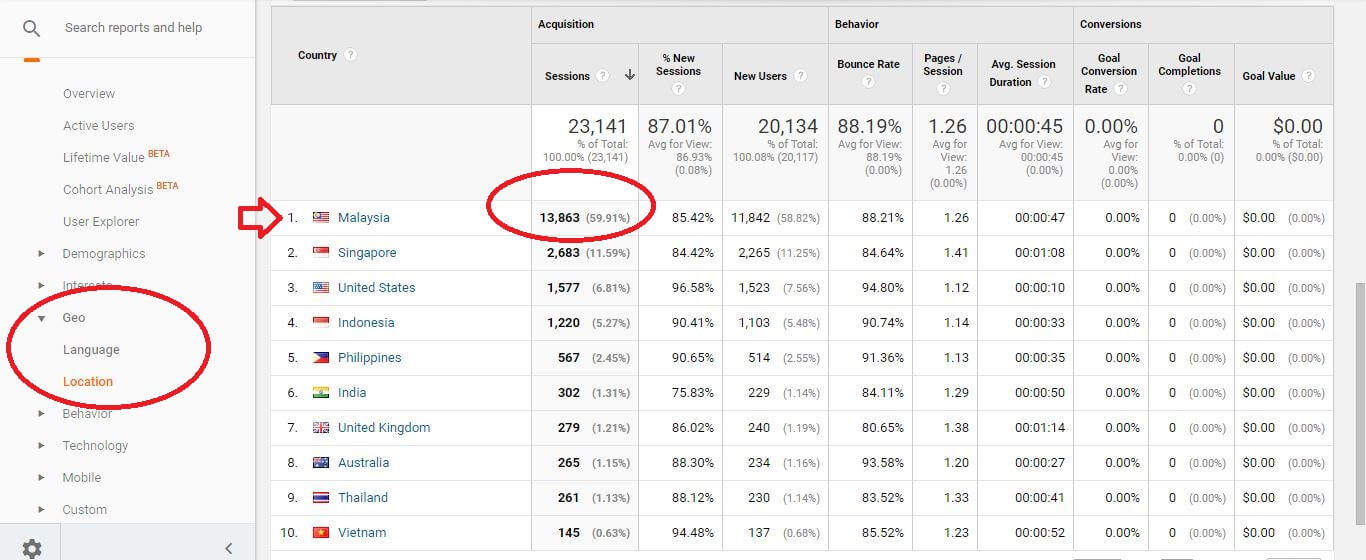

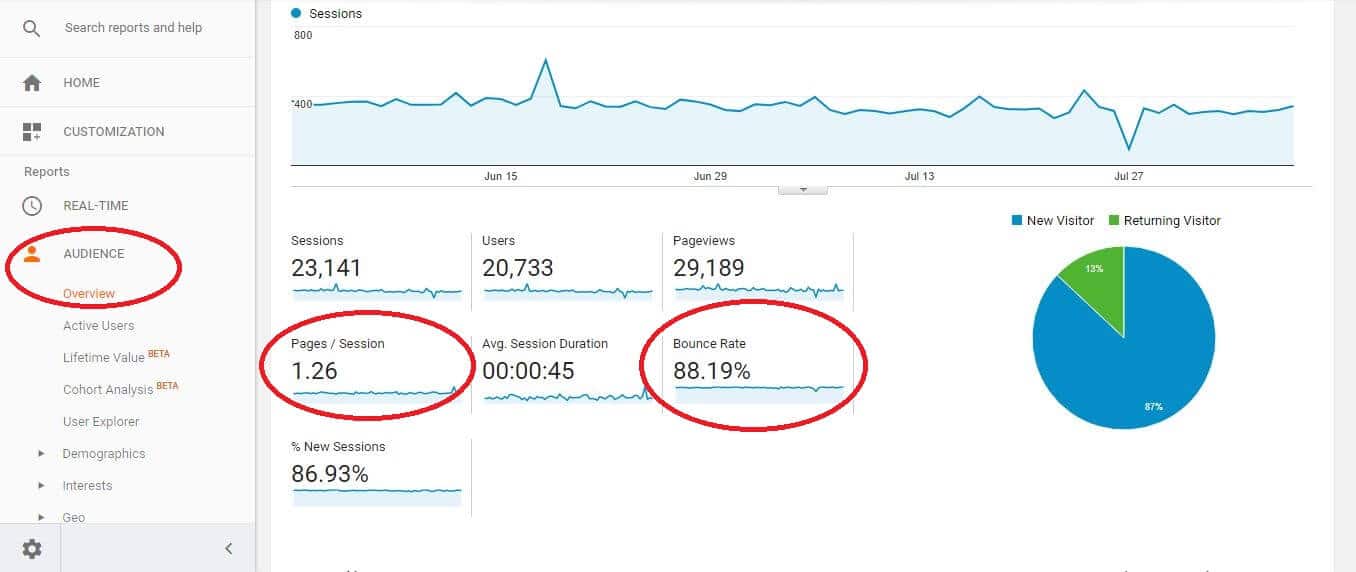

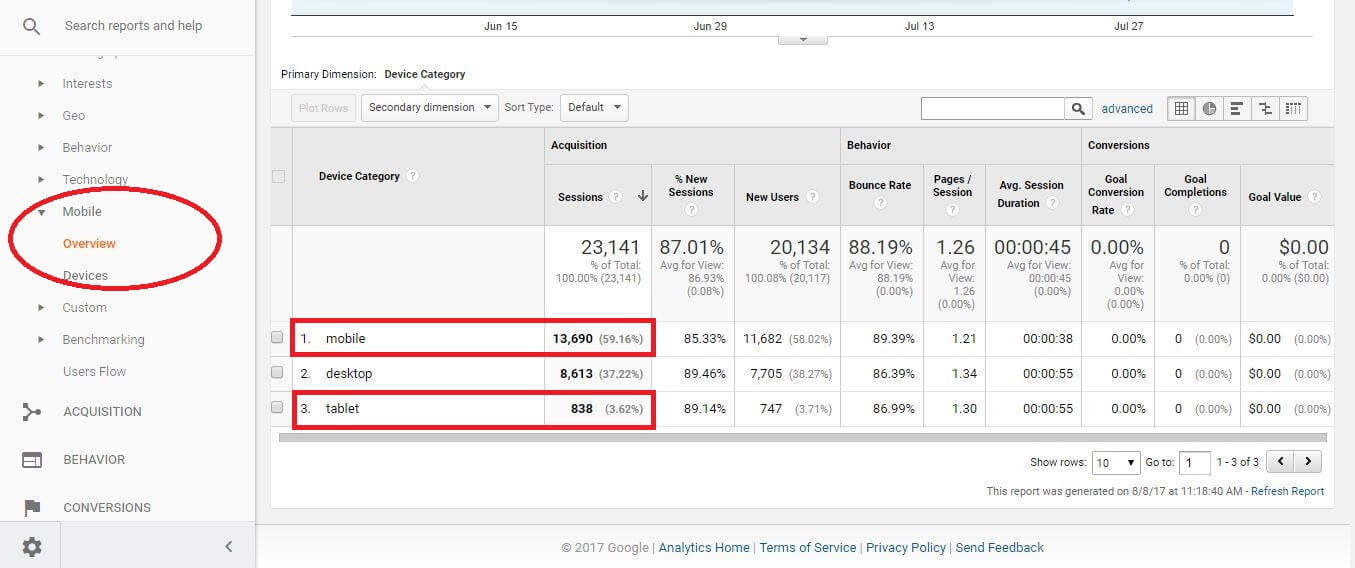



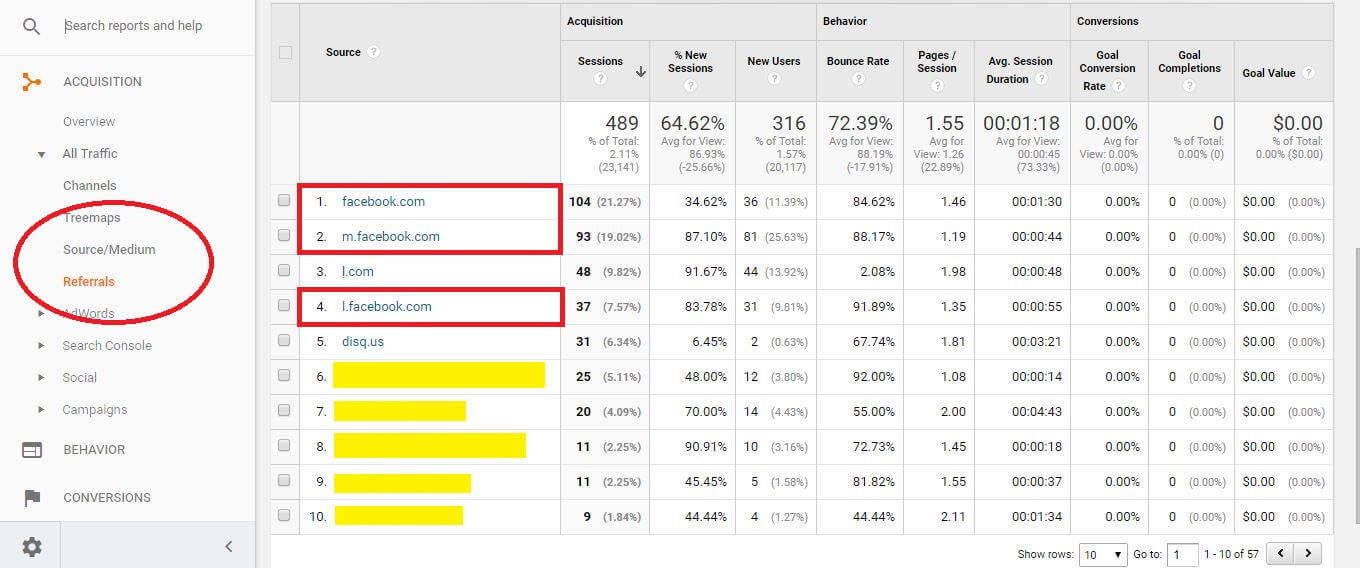
So much good content here. This is going to take some time to go through. Thanks for sharing and for creating a tonne of fun work for me 😉
This is a very helpful post! Well written and full of great tips!
This is so helpful! I’ve gotten so confused with google analytics that I don’t even look at it half of the time lol only to look at my pageviews and that’s it. But I know how important it is to learn more about it! Definitely bookmarking and take some much needed notes on this!
Jasmine 🙂
colorubold.com
Hi Minuca,
As always an interesting read. I agree with your points as I have personally tried this & I appreciate your efforts that you have selected this topic to write an article.
By the way, It’s always pleasure to read your posts and comment.
~ Donna
Hey Minuca
i read this about google analytics and i really learned from you ,
thank you for sharing Minuca , but i want to know do you give us some tips about increase bounce rate ?
Hi Minuca,
If a blogger knows SEO well, then there is nothing to stop his success. Many of us bloggers really do not care about SEO most of the times. Few bloggers doesn’t care at all. You have explained in great detail the benefits of Site optimization with Google Analytics and Google Search console. It will certainly be useful for everyone.
This article definitely is worth bookmarking. Thanks for sharing such a great insightful article.
Reji Stephenson
Thank you for sharing this . It helps me alot
Nice article Minuca,
On the same report, you can add a secondary dimension to identify the landing page for each of the internal search keywords. This information is an indication of sub-optimal keyword targeting: if the user is using internal site search to refine what they are looking for, it means they didn’t enter your site from an appropriate landing page.
Great article. Google search console, Analytics, and Page speed insights are the best free tools to optimize your website and improve traffic.
Best wishes,